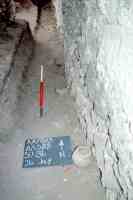
Figure 15. The garden, looking north from room 19
The appearance of the garden is largely open to speculation due to the eradication of much of the sub-surface archaeology by modern tree planting (Figure 15). The two pieces of direct evidence we have are the recovery of ceramic planters in-situ (Figure 16) and the recovery of charcoal from burnt vines. The position of the planters implies the presence of climbing plants up the garden's east wall.

Figure 15. The garden, looking north from room 19

Figure 16. Planters against the east wall of the garden (© AAPP, used with permission)
Two models of the garden have been made. One assumes that the whole of the garden was given over to viticulture and has vines both on the walls and planted throughout the rest of the garden. The other has grapevines merely up the walls with a more ornamental central section.

Figure 17. The garden with vines, looking north east from the atrium

Figure 18. The garden with more decorative plants, looking north east from the atrium
© Internet Archaeology
URL: http://intarch.ac.uk/journal/issue23/3/howgarden.html
Last updated: Tues Feb 5 2008